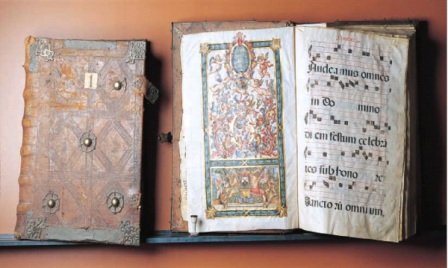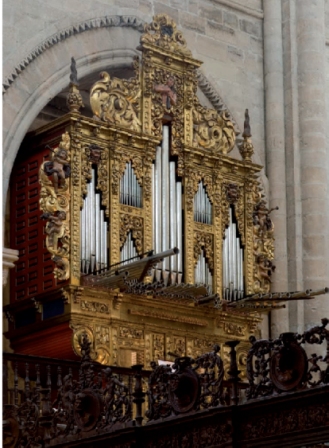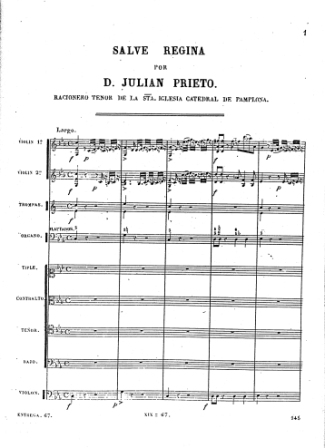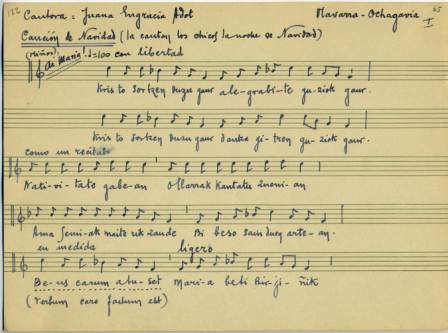25 February
lecture series
DISSEMINATION AND COMMUNICATION OF CULTURAL HERITAGE
Music heritage: from conservation to dissemination
María Gembero-Ustárroz.
Senior Scientist in Musicology. CSIC. Milà i Fontanals Institution (Barcelona).
Musical heritage is very rich and varied, but its profiles have not been well defined, which complicates its proper preservation and dissemination.it is necessary to clarify what is meant by musical heritage, in what legal context it is situated and what are the main assets that constitute it in order to plan the most appropriate conservation and dissemination policies. lecture focuses on the following five points.
1. Definition of Musical Heritage
The need to specifically define musical heritage and its constituent assets has been underlined by several European researchers. Neither the Dictionary of the Spanish language of the Royal Spanish Academy nor the main international scientific dictionaries on music include the concept of Musical Heritage. A definition of Musical Heritage is proposed by applying some of the most accepted definitions of Cultural Heritage to the case of music.
2. framework legal
Reflection on the treatment of Musical Heritage in the Spanish Historical Heritage Law (1985) and in the Cultural Heritage Law of Navarre (2005), and the practical consequences of this legal framework .
3. Main musical assets
Description, with practical examples, of the main assets that constitute musical heritage, among them:
-Manuscript and printed music written on all subject supports: music books and notebooks, musical treatises, musical scores, sheet music, particellas or music on loose papers, musical fragments reused in book bindings.
-Written documents on music, among others: economic, administrative, legal, epistolary, inventories, press, books.
-Musical instruments and workshops for their construction and repair.
-Musical iconography in painting, sculpture, engravings, decorative arts, photography, posters, audiovisual media and Internet.
subject Sound and audiovisual recordings in all media, including: slate records, piano rolls, wax cylinders, LPs, CDs, DVDs, videos, musical performances on radio and television, cinema, etc. -Playback and manipulation equipment for the reproduction and manipulation of music.
-Old and modern sound and/or image reproduction and manipulation equipment.
-Venues for the performance/production of music, including: theatres, auditoriums and concert halls, churches, bell towers, choir stalls.
-Intangible musical heritage, particularly important in the case of traditional music.

Choral books. Tudela Cathedral

Organ. Tudela Cathedral
These organisations have been promoting various methods of disseminating our rich fortified heritage, from the more conventional ones such as the organisation of Congresses, Scientific Meetings, Symposiums or Workshops, among which we highlight the following: Walled Cities and the Internationalcongress on Fortified Heritage: management and development Sustainable, held in Pamplona in 2005 and 2014, respectively. Increasingly, there are informative cycles that aim to bring military architecture closer to all audiences subject , as is the case with publications, which have increased in recent years, with a proliferation of magazines or magazines on this subject, and even greater emphasis has been placed on the essay of manuals or stories with the aim of attracting a younger audience.

Salve Regina, by Julián Prieto

Christmas song, sung in Ochagavía
Collected by Fr. Donostia
4. Representative examples on conservation and dissemination of musical heritage.
Study of some significant projects developed in Spain or currently being developed to conserve and disseminate the musical heritage, with special attention to cases related to the musical heritage of Navarra.
5. Challenges for the future
Some actions are suggested in order to adequately preserve the musical heritage in general and that of Navarre in particular, and to improve its dissemination and social projection:
-Development of an inventory of existing musical assets in Navarre that allows to become aware of the Issue, importance, variety and specificity of the musical heritage of the Community, its different supports and the places and institutions where it is kept.
-Cataloguing and digitalization of the main historical musical collections of Navarre, establishing priorities according to the state of conservation and singularity of the sources.
Preservation of recent collections or at training, for example of contemporary compositions, documents of current musical institutions (choirs, bands, orchestras, theaters and auditoriums, cultural, recreational and educational societies), and archives generated by musical events whose documentation is not usually kept systematically. In partnership with the Library Services of Navarra and other institutions, promotion of a policy of donations of archives and personal libraries of composers and other music professionals.
Creation of a Music Documentation Center of Navarra (or equivalent infrastructure) managed by professionals with adequate musicological, archival and documentary training , to promote stable policies for the protection, cataloguing and dissemination of Navarra's musical heritage.
Dissemination plan of the musical heritage through publications, concerts and educational actions, with partnership of administration officials, show promoters, performers and teachers.
